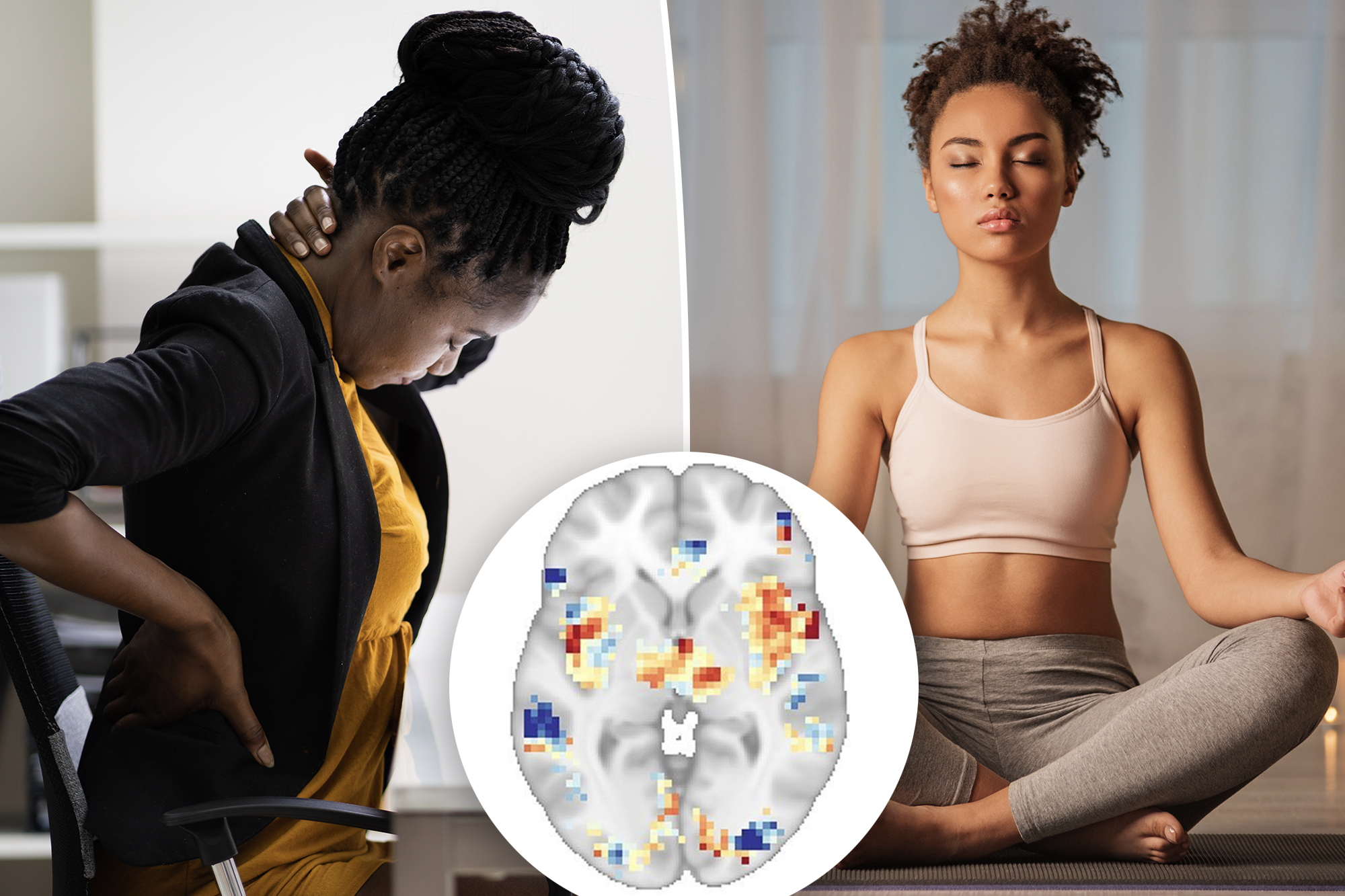
Can ohm remove the edge of oh?
A new study suggests that mindfulness meditation is an effective strategy for pain relief.
The research, published in Biological Psychiatryanalyzed pain signatures in MRI scans to determine the relationship between awareness and the experience of bodily pain.
When asked to rate their pain, participants trained in mindfulness meditation reported less discomfort than those who did not receive the instruction.
According to the American Psychological Association, mindfulness meditation, derived from ancient Hindu and Buddhist practice, is the process of training attention to achieve a state of calm concentration.
The APA said the practice can “help people avoid destructive or automatic habits and responses” by observing their thoughts, emotions and present-moment experiences without judgment or reaction.
Mindfulness meditation has long been valued as an effective tool for both body and mind. Research shows that meditation can lower blood pressureintensify orgasms, improve general health and increase social bonds. When practiced in the workplace, mindfulness meditation protects against anxiety, stress and burnout.
But can the power of the mind and the mind/body connection be used to manage pain?
“The mind is incredibly powerful and we are still working to understand how it can be used for pain management,” explains anesthesiologist Fadel Zeidan from the University of California San Diego (UCSD).
Zeidan, UCSD neuroscientist Gabriel Riegner and a team of researchers set out to examine how the brain processes pain and whether the effects of mindfulness meditation can lessen our experience.
As the researchers note, “pain is shaped by the interaction between one’s experiences, current cognitive-affective states, and expectations.”
The study included 115 participants who were divided into two separate clinical trials. In both trials, participants were touched on the right calf with a lighted probe that produced painful but harmless heat waves.
Before the experiment, a number of participants were trained in mindfulness meditation.
In four separate, 20-minute sessions, this group learned to focus on changing the cadence of their breathing and to acknowledge and accept the ebb and flow of thoughts and feelings without reaction or judgment.
Another group was given a sham exercise consisting only of deep breathing; others were given a placebo cream they were told would reduce pain, and another group listened to an audio book instead of meditation instructions.
MRI brain scans were used before and after the pain experiments, and participants were asked to rate the intensity of their pain on a scale of zero to 10.
MRI scans provided information on several pain markers, including the nociceptive specific pain signature (NPS), which is associated with intensity; the negative emotional pain signature (NAPS), which measures our emotional experience of pain; and the stimulus-independent pain signature (SIIPS-1), which is related to our expectations of pain.
MRI scans of the meditation group revealed a more significant reduction in both NPS and NAPS compared to the placebo cream group and other participants.
The only treatment that produced a significantly lower response in SIIPS-1 was placebo cream.
According to the researchers, these results suggest that the pain-relieving effects of mindfulness meditation are based on properties beyond placebo; otherwise, meditation would have had a significant impact on SIIPS-1.
Zeidan explains, “It has long been assumed that the placebo effect overlaps with brain mechanisms induced by active treatments, but these results suggest that when it comes to pain, this may not be the case. Instead, these two brain responses are completely distinct, which supports the use of mindfulness meditation as a direct intervention for chronic pain rather than as a way to incorporate the placebo effect.
Zeidan and his team hope their findings will help reshape treatment and improve the quality of life for people experiencing chronic pain.
“By separating the pain from the self and letting go of evaluative judgment, mindfulness meditation can directly modify the way we experience pain in a way that doesn’t use drugs, costs nothing, and can be practiced anywhere,” says Zeidan.
Zeidan continues, “We are excited to continue exploring the neurobiology of consciousness and how we can harness this ancient practice.”
#minutes #relieve #pain #study #finds
Image Source : nypost.com